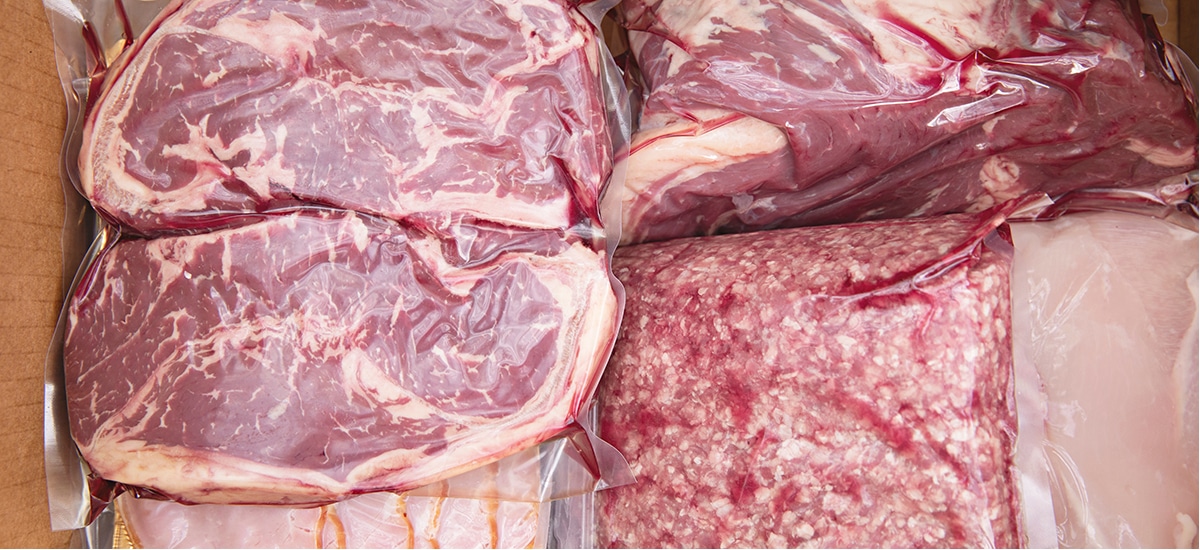
Meat Delivery Subscription Opportunities for Retail Butchers
Today, convenience is key to most customers. In a world of time-poor, stressed-out consumers, people will pay higher prices for anything that saves time and personal effort. This has led to the rise of food delivery apps like Uber Eats and Deliveroo.
These apps allow you to choose your meal from a range of participating restaurants and fast food outlets. The food is then picked up and delivered to your door by one of the program’s drivers. It is often significantly more expensive than going and getting it yourself, but who cares as long as you don’t have to leave your couch or desk.
… some butcher stores have even gone as far as transforming themselves into monthly subscription services.
This desire for convenience over and above many other product features, means time saving developments like item delivery will only increase in popularity. For all those in the food industry, it’s the perfect new opportunity to generate a lot of interest.
It’s even relevant for those in businesses less obviously suited for online order and delivery. For instance, it’s a viable option for retail butchers. And if you think that’s far-fetched, if a retail butcher hopped on the trend right now, they’d still be behind some of the market’s forward thinkers.
For example Canning’s Free Range Butchers already has a delivery service, where you can order online for delivery across Melbourne. And some butcher stores have even gone as far as transforming themselves into monthly subscription services.
This system has got some great advantages, the main one being that an online ordering system is today, one of the single best ways to reach your customers, with the increasing amount of time millennials and the younger generations spend online. For instance, 31% of people surveyed by Mintel use 3rd party delivery services more than twice a week.
To give you an idea of how quickly this means the market is growing, investment bank UBS predicts delivery sales could rise an annual average of more than 20 percent to $365 billion worldwide by 2030, from $35 billion.
If you were considering including online order and delivery as a purchase option, you could either use your own delivery service, or a third party food delivery app – it’s about deciding which is right for you.
Both methods have their benefits. Using your own service means you can tailor it exactly for your needs. This also means you have greater control of quality of delivery, better branding throughout, and more direct contact with your customers.
However, if you use a third party, it can be cheaper, as you reduce the cost of running a delivery service. Furthermore, you will be more likely to be found by potential customers if you’re on an app they use already. Going through a third party is a great way to start when offering a delivery service.
… this seems like the a trend that won’t be going away in a hurry.
There are, however a few concerns with third party services like Uber Eats to consider before making a decision. On the ethical side, it’s thought Uber Eats underpays their drivers, and disclaims liability for them, referring to them as ‘delivery partners’ rather than employees. They also insist on a 35% commission from participating businesses, which could reduce the total value of sales, though increasing the volume of them.
So, if you do decide offering delivery is right for you, what will this do for your business? This trend has several great benefits. It often means your customers will buy in bulk or at least bigger average orders, to help them rationalise a delivery charge. A delivery option will also allow you to reach a wider target market of people who would typically be too far away to drive to you just to buy some meat.
The downside for some businesses that pride themselves on customer service, is you lose the personal connection with customers to a great degree. Online ordering to delivery is a detached, clinical system, where you can’t really build the rapport with customers that leads to loyalty. Therefore, your customers are more likely to move on if they find a similar service at a cheaper price.
Overall, from the exponential growth in popularity of food (including both raw ingredients and fully prepared meals) delivery in the past few years, this seems like the a trend that won’t be going away in a hurry. Think about a way you could use this as your business’s point of difference without losing the uniqueness that makes your shop special. For the new breed of consumers – led by the millennial – convenience is king.
If you can find a way to provide this to your customers, it may be the most important factor for customers choosing to purchase from your business.
Equipping the food industry to grow with food processing and packaging solutions
call 1300 88 99 51
email [email protected]
room 35 Shirley Way, Epping VIC 3076
room 9 Mcilwraith St, Wetherill Park NSW 2164
room 21 Hoyle Rd, Hope Valley WA 6165
room 27 Beal Street, Meadowbrook QLD 4131
room 7 Chadderton Bvd, Epping VIC 3076
room 40 Logistics Boulevard, Kenwick WA 6107
room 25 Hayton Road, Wigram, Christchurch 8042, NZ
Connect with us on LinkedIn
